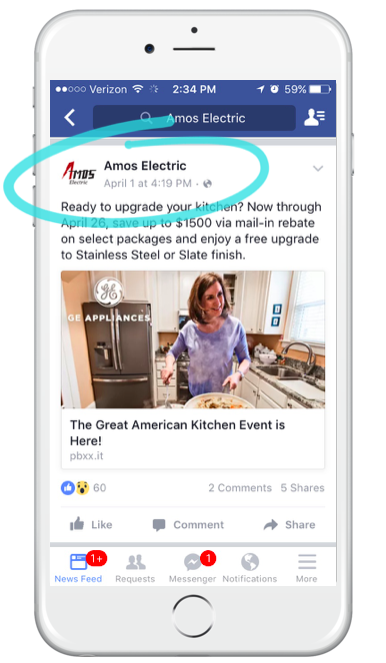

Traditional co-op advertising has reached a point where it is not only out-of-date, but taxing and inefficient for all involved, particularly for the local retailers who truly need the marketing support.
As detailed in a recent blog post, we conducted a survey asking retailers to share insights into their experiences with co-op advertising.
While there were key findings regarding lengthy reimbursement processes and challenges that prevent co-op participation, what stood out was what retailers had to say about the top ways in which co-op advertising could be made easier for them.
With this survey and its findings, we hope to continue to pave the way for co-op advertising innovation in the digital age.
Many brand managers still claim that retailers don’t understand digital marketing and that this is the biggest hindrance to their participation in co-op programs. Not so.
Retailers have either proven that they can do digital marketing (exemplified in the reach that they’ve generated organically and through paid advertising on their own digital channels) or at least understand the impact it can have on their business.
The issue is that co-op advertising can be a cumbersome and time-consuming process that is still largely paper-based, only making things messier and more challenging to track.
Co-op advertising needs to drop the old-fashioned mechanisms and move towards digital processing for ads. It would streamline the process for all involved, leading to faster turnaround times and taking the burden away from retailers.
Direct feedback from retailer survey: “It’d make things a lot easier if all claims could be made digitally. There would definitely be a faster turnaround.”
In a recent study by Borrell Associates, retailers cite “too many rules” (along with “too much paperwork”) as one of the chief obstacles to co-op participation. Our own retailer data supports this.
Too often, retailers will promote a brand only to find out that their ad or marketing effort doesn’t fall under the brand’s co-op reimbursement guidelines.
To combat this and ensure that retailers aren’t wasting their time or money, co-op program guidelines need to be clearer from the start with firm rules in place and pre-approved advertising options.
Direct feedback from retailer survey: “There needs to be less red tape, better clarity on requirements, and a wider selection of product/ad creative.”
A small, resource-strapped business may want to do more local advertising but lack the means to front the money (a common necessity in co-op advertising programs).
By providing retailers with easier access to funds to spend on advertising, you can drive brand-retailer goodwill and only make them more likely to actively promote your brand to their local audiences.
Many of the retailers surveyed revealed that there are times when they aren’t even aware when co-op programs or funds are available to them. It goes without saying that retailers can’t participate in co-op programs if they don’t even know about them.
Brands need to become more proactive and have a greater hand in the overall process, whether by providing retailers with information and education on co-op advertising or by simply giving them a way to see their accounts (accrued credit and balance, pending funds, spent funds, etc.).
There are even brands that don’t participate in co-op programs at all, leaving money on the table for retailers who could use the financial backing to support their marketing efforts.
The majority of co-op programs offer retailers limited advertising options, with the main focus on outdated channels like newspaper, direct mail, and radio. While digital marketing is becoming a greater part of co-op offerings, increasingly important channels like social, video, and mobile are largely forgotten, ultimately limiting retailers’ local reach and hurting their businesses.
Retailers also want more content options available for co-op reimbursement. With more content options, retailers gain a greater sense of choice, allowing them to pick and choose advertising creative according to their audience.
Knowing their local customers best, it’s imperative that retailers have flexibility in how and where they spend their money.
Direct feedback from retailer survey: “There needs to be a less-detailed system of checks and balances, a bigger range of what is covered under co-op, and more options overall.”
The shift to digital has challenged established traditions, but it also presents us with an opportunity to innovate and rebuild for the modern needs of local retailers.
Leading brands like New Balance, Electrolux, and Trek Bicycle are currently leveraging Promoboxx Local Ads to cut the messy processes and directly extend funds for high-quality advertising to their local retailers.
By effectively engaging retailers and driving new local customers in-store, Local Ads works as an alternative to co-op programs. Here’s how:


Example Local Ad on Facebook
While it doesn’t get much easier than directly providing retailers with advertising funds, we understand that drastic changes to longstanding conventions can’t be made overnight. This is why we’ve started working with brands as an approved partner to integrate with their existing co-op advertising systems.
Every co-op program is unique, but we are happy to work with you to make things as smooth as possible, whether by taking the cumbersome reimbursement process off of the retailer’s plate or by improving the overall journey to co-op evolution. We’re here to help along the way.
Contact us today to learn more about our ad capabilities and how you can start taking the next steps towards co-op innovation.
Retailers Tell All [Co-Op Advertising Survey] >
5 Obstacles to Local Marketing Alignment Between Brands and Retailers >
Why Is Digital Co-Op Advertising So Hard? >
The Promoboxx Approach: Maintaining Transparency in the Digital Age >

